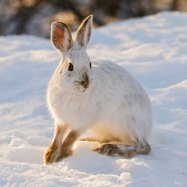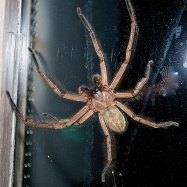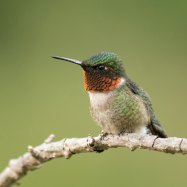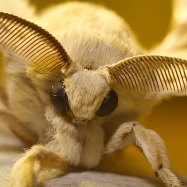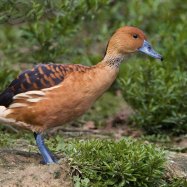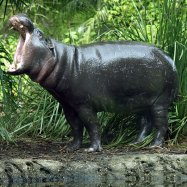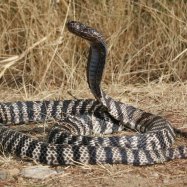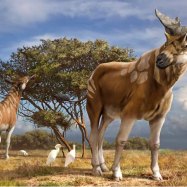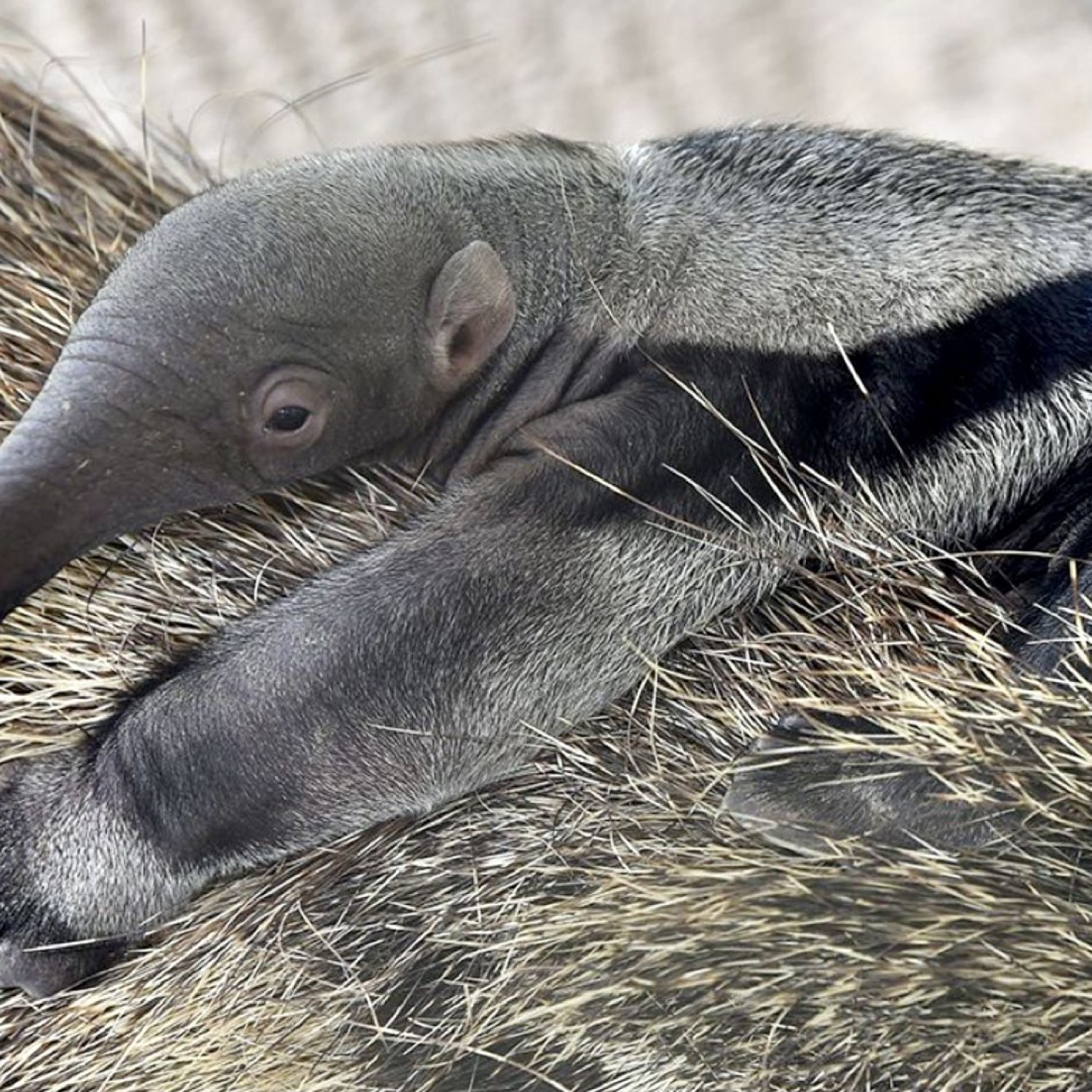
Anteater
6 to 8 feet
Anteaters are fascinating animals found in the Amazon Rainforest. They belong to the Myrmecophagidae family and can grow up to 6 to 8 feet long. With their long and slender body shape, they are perfectly adapted to feed on ants and termites. Also known as ant bears, these creatures use their strong claws and sticky tongue to catch their prey. Next time you visit the Amazon, keep an eye out for these curious and unique animals. #Anteater #AmazonRainforest #Myrmecophagidae
Animal Details Summary:
Common Name: Giant Anteater
Kingdom: Animalia
Habitat: Open grasslands, savannas, and forests
The Fascinating Giant Anteater: A Hunter of the Insect World
Nature is full of diverse and unique creatures, each with its own set of remarkable traits and abilities. Among these fascinating animals is the Giant Anteater, also known by its scientific name Myrmecophaga tridactyla. This unusual mammal, found in the Central and South American region, has long captured the curiosity and imagination of humans. With its distinctive body shape, feeding habits, and habitat, the Giant Anteater has carved out a niche for itself in the natural world Anteater. Let's take a closer look at this remarkable animal and discover what makes it so intriguing.Belonging to the kingdom Animalia, phylum Chordata, class Mammalia, and order Pilosa, the Giant Anteater is one of the four living species of anteaters. It is also the largest of the four, hence its common name. The other three species are the Silky Anteater, the tamandua, and the northern and southern Tamanduas. The Giant Anteater's closest relative is the tamandua, with whom it shares many similarities.
The scientific name Myrmecophaga tridactyla literally translates to "ant-eating with three fingers." This perfectly describes one of the Giant Anteater's most unique features – its long and sharp front claws that it uses to dig into termite and ant nests.
Giant Anteaters have a wide geographical distribution, with their presence in almost every Central and South American country. However, they are most commonly found in Brazil, where the majority of their population resides Argentine Horned Frog. In Brazil, Giant Anteaters are mainly found in the lush Amazon Rainforest, where they thrive in the open grasslands, savannas, and forests.
A Hunter of the Insect World
The Giant Anteater is a specialized insectivore, meaning that its primary diet consists of insects. Its main source of food is ants and termites, although it occasionally consumes other insects like caterpillars and larvae. With its long, sticky tongue, the Giant Anteater can quickly capture insects from their nests and devour them.Interestingly, the Giant Anteater does not have any teeth, making it incapable of chewing its food. Instead, it relies on its strong stomach acids to break down and digest the insects it consumes.
The Giant Anteater's diet leads to a unique feeding method that showcases the animal's impressive hunting skills. It has a strong sense of smell that it uses to locate ant and termite nests, which it then breaks open with its powerful forearms and claws. Once the nest is breached, the Giant Anteater uses its long, sticky tongue to extract the insects from their hiding spots.
This process requires an enormous amount of energy, and the Giant Anteater can consume up to 30,000 insects in a day to fuel its body. With such a high demand for food, Giant Anteaters continuously roam around their habitat, covering an area of around 19 square miles.
A Grayish-Brown Beauty
The Giant Anteater's body is as unique as its feeding method. It has a long and slender shape, with an average length of 6 to 8 feet from nose to tail. However, around half of this length is taken up by its bushy tail. It has a relatively low weight, ranging from 40 to 140 pounds, making it the lightest of all the Giant Anteater.One of the most notable features of the Giant Anteater is its striking coloration. It has a thick, grayish-brown coat with black stripes running down its back and sides. This coloration is perfect for camouflage in the grasslands and forests where it resides, making it difficult for predators to spot.
The Giant Anteater's long, coarse fur also serves as protection against its primary prey – insects. The fur is thick enough to prevent stings and bites, and some experts believe that it may even act as a fire retardant in case of forest fires.
Living Life in Solitude
The Giant Anteater is a solitary animal, and adult males and females only come together to mate. A male and female pair may spend a few days together before going their separate ways again.Their solitary nature may be attributed to their large home range and specific habitat requirements, making competition for resources high. Additionally, Giant Anteaters are not very social animals, and they prefer to stay on their own, avoiding conflicts with other animals.
This solitary lifestyle also extends to parenting. Female Giant Anteaters will give birth to a single offspring every other year, and they are solely responsible for the care of their young. The young are born fully furred and will cling to their mothers for the first few months of their lives. After six months, they will start riding on their mothers' backs and will eventually become independent after a year.
The Giant Anteater's low reproductive rate is another factor contributing to its solitary nature, as females have to dedicate a lot of energy towards raising their young. With their long lifespan of 14 years in the wild, Giant Anteaters have plenty of time to reproduce and help maintain their species' population.
Threats and Conservation
Unfortunately, the Giant Anteater is currently facing a considerable decline in its population, mainly due to habitat loss and hunting. The once vast Amazon Rainforest, which was the primary habitat of these animals, is rapidly being destroyed, leaving Giant Anteaters with limited areas to roam and find their food.Hunting, for both food and medicinal purposes, has also contributed to the decline in Giant Anteater numbers. They are a vulnerable species, and with their slow reproductive rate, it is challenging for them to recover from population declines.
Thankfully, efforts are being made to protect and conserve the Giant Anteater. Many organizations and NGOs are working towards preserving the Amazon Rainforest and creating protected areas for these animals to thrive. Local communities are also being educated on the importance of these animals and their role in the ecosystem.
In Conclusion
In summary, the Giant Anteater is a truly remarkable animal, with its hunting prowess, unique physical features, and solitary lifestyle. Its highly specialized diet and solitary behaviors have contributed to its captivating nature, making it a fascinating subject of study for scientists and nature enthusiasts alike.However, with the ongoing threats to its habitat and population, it is our responsibility to raise awareness and take action to protect this incredible animal. We must learn to appreciate and coexist with all the creatures that share our planet, and the Giant Anteater is undoubtedly one of nature's many wonders that deserve our admiration and protection.

Anteater
Animal Details Anteater - Scientific Name: Myrmecophaga tridactyla
- Category: Animals A
- Scientific Name: Myrmecophaga tridactyla
- Common Name: Giant Anteater
- Kingdom: Animalia
- Phylum: Chordata
- Class: Mammalia
- Order: Pilosa
- Family: Myrmecophagidae
- Habitat: Open grasslands, savannas, and forests
- Feeding Method: Insectivorous
- Geographical Distribution: Central and South America
- Country of Origin: Brazil
- Location: Amazon Rainforest
- Animal Coloration: Grayish-brown with black stripes
- Body Shape: Long and slender
- Length: 6 to 8 feet
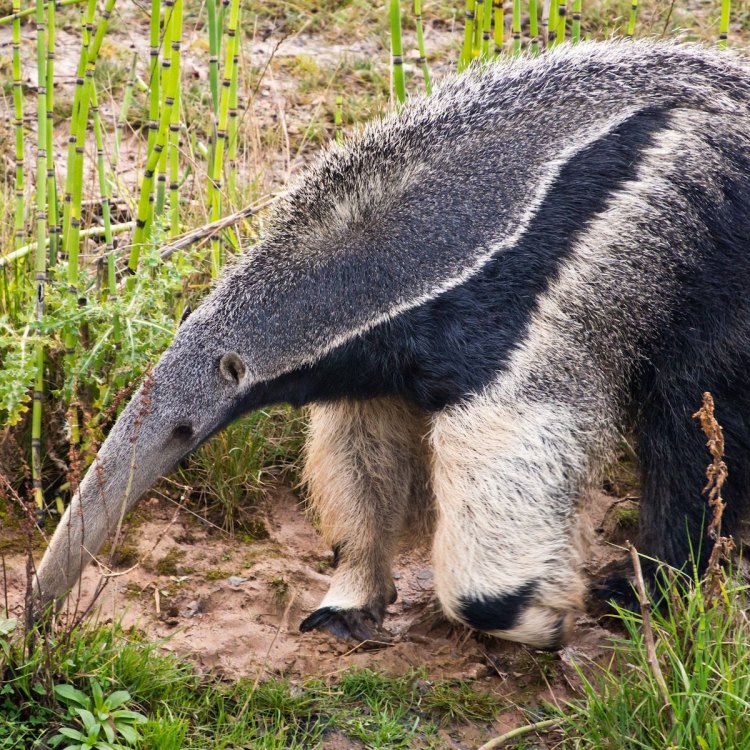
Giant Anteater
- Adult Size: 35 to 59 inches (shoulder height)
- Average Lifespan: Around 15 years
- Reproduction: Viviparous
- Reproductive Behavior: Solitary
- Sound or Call: Low grunting sounds
- Migration Pattern: Non-migratory
- Social Groups: Solitary
- Behavior: Nocturnal
- Threats: Habitat loss, hunting, roadkill
- Conservation Status: Vulnerable
- Impact on Ecosystem: Important for controlling ant and termite populations
- Human Use: Poaching for fur and habitat destruction
- Distinctive Features: Long snout, strong claws, bushy tail
- Interesting Facts: Giant anteaters have the longest tongue of any anteater species, reaching up to two feet in length.
- Predator: Jaguars and large snakes
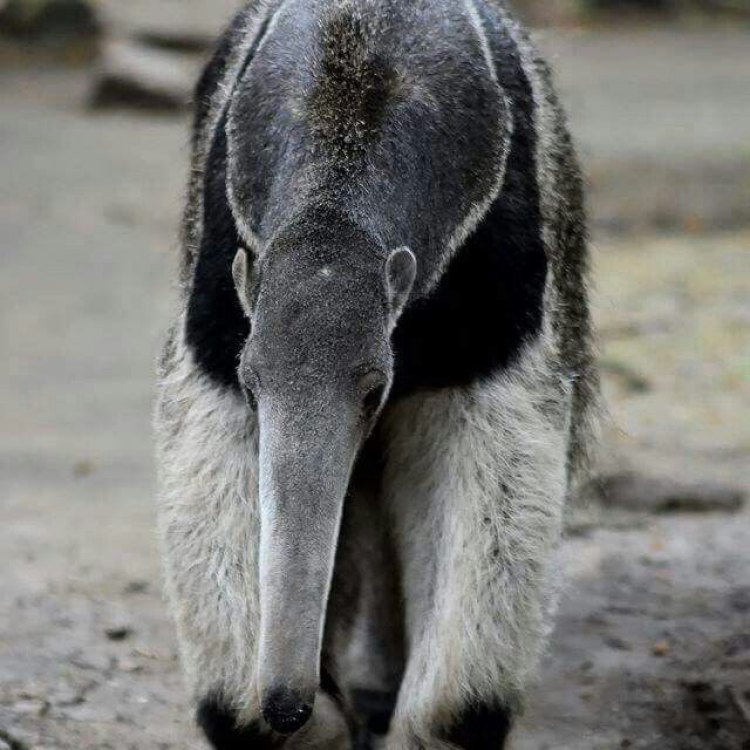
Myrmecophaga tridactyla
The Fascinating World of Anteaters: Unsung Heroes of the Ecosystem
Nature is full of diverse and remarkable creatures, both big and small. But one species that often gets overlooked is the humble anteater. With their distinct appearance and important role in the ecosystem, these relatively unknown animals deserve more attention. Let's delve deeper into the world of anteaters and discover what makes them so unique PeaceOfAnimals.Com.First and foremost, anteaters are part of the family Vermilingua, which means "worm tongue" in Latin. This is a fitting name, as their most distinctive feature is their long snout and even longer tongue. Their elongated snout is filled with tiny sensory receptors that help them detect their prey – ants and termites. This specialized feature makes them the only mammals in the world that lack teeth, with the exception of the extinct species, the pangolin.
Anteaters come in different sizes and species, but the most common ones are the giant anteater, the silky anteater, the southern tamandua, and the northern tamandua. And while giant anteaters can reach up to 59 inches in height at the shoulder, the smaller species are no less fascinating. All anteaters have one thing in common – their solitary nature. They prefer to live alone, with the exception of mothers with their young offspring. This behavior is mainly due to their need for vast territories to search for food Axolotl.
Speaking of food, anteaters are insectivores, meaning they solely rely on insects for their diet. And boy, do they have an appetite for them! Giant anteaters can eat up to 30,000 ants and termites in a single day. This voracious feeding habit proves to be crucial for the ecosystem, as they help control the populations of these pesky critters. In fact, research has shown that the decline in anteaters' populations has led to an increase in termite and ant colonies, causing harm to vegetation and agriculture.
Reproduction is another crucial aspect of the anteater's life, as with any species. However, what makes anteaters stand out is their reproduction method – viviparity. This means that the female mammals carry the embryo inside their body and give birth to live young. In the case of anteaters, the female only gives birth to one offspring at a time, and after a gestation period of six months. This may seem like a small number, but due to their slow reproductive rate and declining populations, it has become a cause for concern.
With a lifespan of around 15 years in the wild, anteaters have a relatively short lifespan compared to other mammals. This is mainly due to the threats they face, both natural and man-made. One of the biggest threats to anteaters is habitat loss. As their habitats, which include grasslands, forests, and savannas, are destroyed for human activities such as agriculture and development, they are left with limited areas to roam and search for food.
Another significant threat is hunting and poaching, mainly for their valuable fur. Despite their important role in the ecosystem, anteaters are not immune to exploitation. Whether it is for their luxurious fur or as exotic pets, illegal trade and poaching have significantly contributed to the decline in their population. In some places, specially trained dogs are used to sniff out the underground burrows of anteaters, making it easier for hunters to capture and sell them. This cruel practice has led to the decline in wild anteater populations, and in some places, they are now classified as a vulnerable species.
But it's not just human activities that pose a threat to anteaters. Their solitary and nocturnal behavior means that they are prone to roadkill accidents. As they mostly move around at night, they often become victims of speeding cars on roads that cut through their habitats. This is another factor that contributes to the decreasing numbers of these unique animals.
Due to these threats, the conservation status of anteaters is vulnerable, and their populations have declined significantly in recent years. Various organizations and initiatives have been set up to protect them and their habitats, but more action needs to be taken to ensure their survival.
Anteaters may not be as well-known as other iconic animals, such as lions and elephants, but they have an equally important role in the ecosystem. Their decline is not just a loss for the species but has a broader impact on the environment. Without anteaters, ant and termite populations will continue to grow, causing harm to the ecosystem and human activities.
As we have seen, these animals are already facing numerous threats, and it is our responsibility to ensure their survival. This can be achieved through conservation efforts, such as protecting their habitats, implementing laws to prevent poaching and hunting, and educating the public about their importance in the ecosystem. As for us, we can also play a role by being responsible citizens and making conscious decisions to help preserve the environment.
In conclusion, anteaters may not be the most talked-about animals, but their unique features, important role in the ecosystem, and the threats they face make them a species that deserves our attention and protection. Let's appreciate and celebrate these unsung heroes of the ecosystem and work towards their conservation for future generations to experience the wonder of these amazing animals.
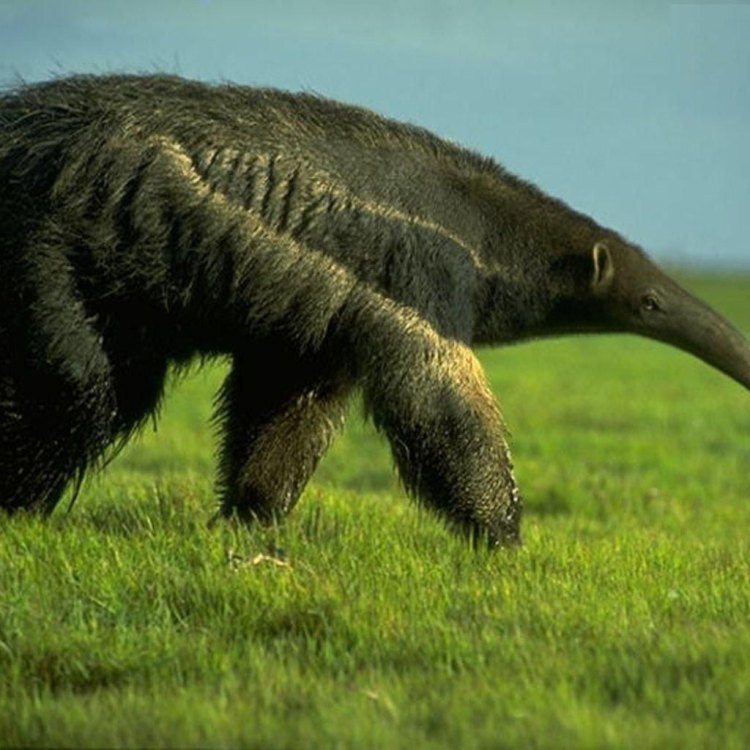
The Fascinating Giant Anteater: A Hunter of the Insect World
Disclaimer: The content provided is for informational purposes only. We cannot guarantee the accuracy of the information on this page 100%. All information provided here may change without prior notice.



